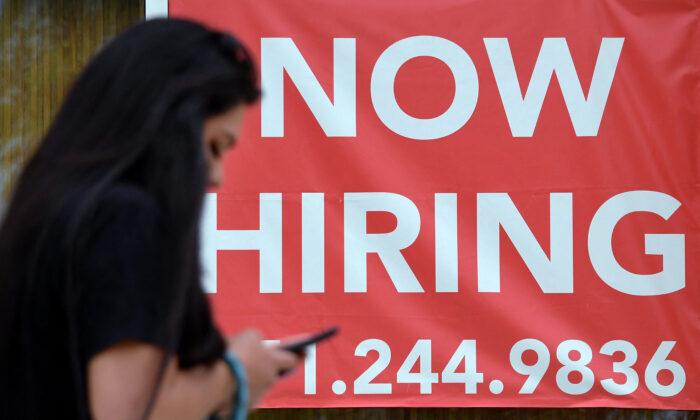As labor shortages intensify amid The Great Resignation, companies are making several adjustments to current market conditions.
The reasons for workers quitting in such massive numbers range from not wanting to return to the office to complaints of being overworked and underpaid.
But how are employers adapting to this post-pandemic landscape?
Automating the Workforce
With 62 percent of executives at large U.S. companies reporting challenges with the present labor shortage, 78 percent of them are planning to invest or increase their investment in automation, according to a recent survey commissioned by UiPath, an enterprise automation software firm.The study revealed that businesses are incorporating automation and automation training into their day-to-day practices, serving as a complementary resource rather than a replacement of the human component. Executives plan to better train employees to better utilize the technology, giving the employers a better chance of retaining talent.

“The skills these workers gain in automation-first environments provide rich career opportunities in inventive workplaces.”
According to the group, companies across North America spent more than $2 billion for about 40,000 robots, up 28 percent from 2019.
Although the lockdowns and pandemic-related benefits played a role in employers across multiple industries shifting to robots, it’s also about the technology not needing to take breaks for food and sleep.
“We still have employees working around the robots, but we can reduce labor by roughly half.”
Restaurants have been at the forefront of implementing automation into daily operations, whether it’s preparing hamburgers or frying chicken wings. And experts say the trend may accelerate since there aren’t too many signs of labor shortages abating.
“Fast food restaurants and other establishments that have embraced automation have fared better throughout the pandemic. Restaurants with automation are most poised to stay open because they meet consumers where they’re at—where they want to order,” Sam Zietz, CEO of GRUBBRR, a self-ordering-systems solutions provider, told The Epoch Times.
The data also show it can be a profitable investment.
In addition to the one-time cost of a kiosk being a fraction of the price of maintaining a worker, customers spend more when they order themselves.
“On average, a cashier at a quick-service restaurant open 15 hours per day will cost more than $6,000 per month, whereas GRUBBRR self-ordering systems are a fraction of that price. In addition, kiosks always show up, don’t call in sick, and are ready to work 24/7,” he said.
“Consumers spend on average 12 percent to 20 percent more when they order with their eyes and with touch from a self-ordering device than when ordering from a cashier, thereby reducing the need for price increases.”
Looking Inward
One notable trend in the labor market is the growing number of employers who are retaining their personnel, relying on higher wages and superior perks to incentivize staying at the business.This does have some drawbacks for employees who have decided to stay.

Bank of America researchers note that companies are leaning on the labor they presently possess, requiring them to boost productivity and take on more responsibilities.
“This is not sustainable: you can only speed up the treadmill for so long,” BofA researchers stated.
Because the labor market is tilted in favor of workers, staff can demand better working conditions, flexibility, and compensation. Otherwise, if they protest long shifts and short staffing, it could threaten operations and force the businesses to close their doors.
Whatever the case, the current trend of labor shortages dominating business headlines and discussions has seeped into the broader economy. Restaurants are scaling back their menus, businesses are simplifying their products, and food processors are facing intense backlogs that are sending smaller amounts of poultry to the supermarket.
With the nation’s labor force having about 3 million fewer people than it did prior to the public health crisis, market analysts think that the jobs market has been permanently altered.





